All products featured are independently chosen by us. However, SoundGuys may receive a commission on orders placed through its retail links. See our ethics statement.
The 6 Best Studio Headphones of 2025
May 14, 2025
There are lots of reasons to consider buying studio headphones. While the term studio headphones gets tossed around incorrectly a lot (looking at you, Beats), it generally refers to headphones that are intended for use in a recording studio, or professional audio environment. If you are recording music, you’ll want a good set of closed-back studio headphones that can monitor the recording without leaking into the microphone. There are also open back studio headphones, which are ideal for mixing music. Either way, you’ll want headphones that sound accurate, with a relatively neutral frequency response.
We’ve tested hundreds of headphones in our SoundGuys lab, and have narrowed down the top studio headphones worth considering. Ultimately, you should buy the studio headphones that are best suited to your audio needs and preferences, but these options are a good place to start. You can also check out our recommendations for the best open back headphones, the best budget studio headphones, and the best headphones for music.
The best studio headphones for most people

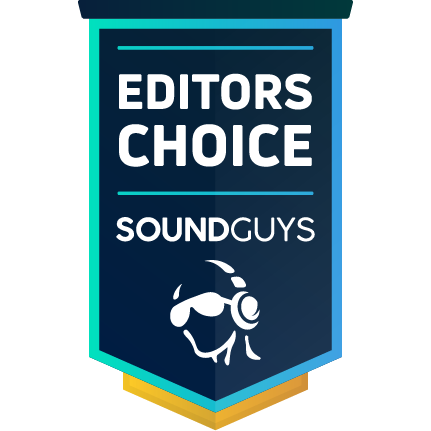
Durability 6.9 Value 8.5 Design 9.2 Comfort 9.3
The Beyerdynamic PRO X series caters to the modern creator with a low 48Ω impedance and comfortable build. The Beyerdynamic DT 900 PRO X has an open-back design, and all of the parts are easy to replace without the need for tools. This is a great pick for engineers who want to focus on production and can’t afford to get bogged down with difficult repairs. If you’ve used a set of over-ear Beyerdynamic headphones before, you’ll feel right at home with the DT 900 PRO X and its plush ear pads. A mini-XLR input sits on the left ear cup, and the included cable locks into place.
Since this is an open-back headset, its utility is a bit limited. You’ll hear everything gone around you should you choose to take it on a stroll. But hey, that’s unlikely anyway since this is built for studio use. When you do get the headset into a quiet environment, you’ll enjoy excellent audio reproduction with consistent volume output from the bass and mids. There’s a 5dB boost relative to our house curve, from 4-7kHz, but that can make it easier to hear string attacks during a particularly busy part of a song. This isn’t always ideal when mixing audio, so you can always EQ it down via a desktop application.
Loading chart ...
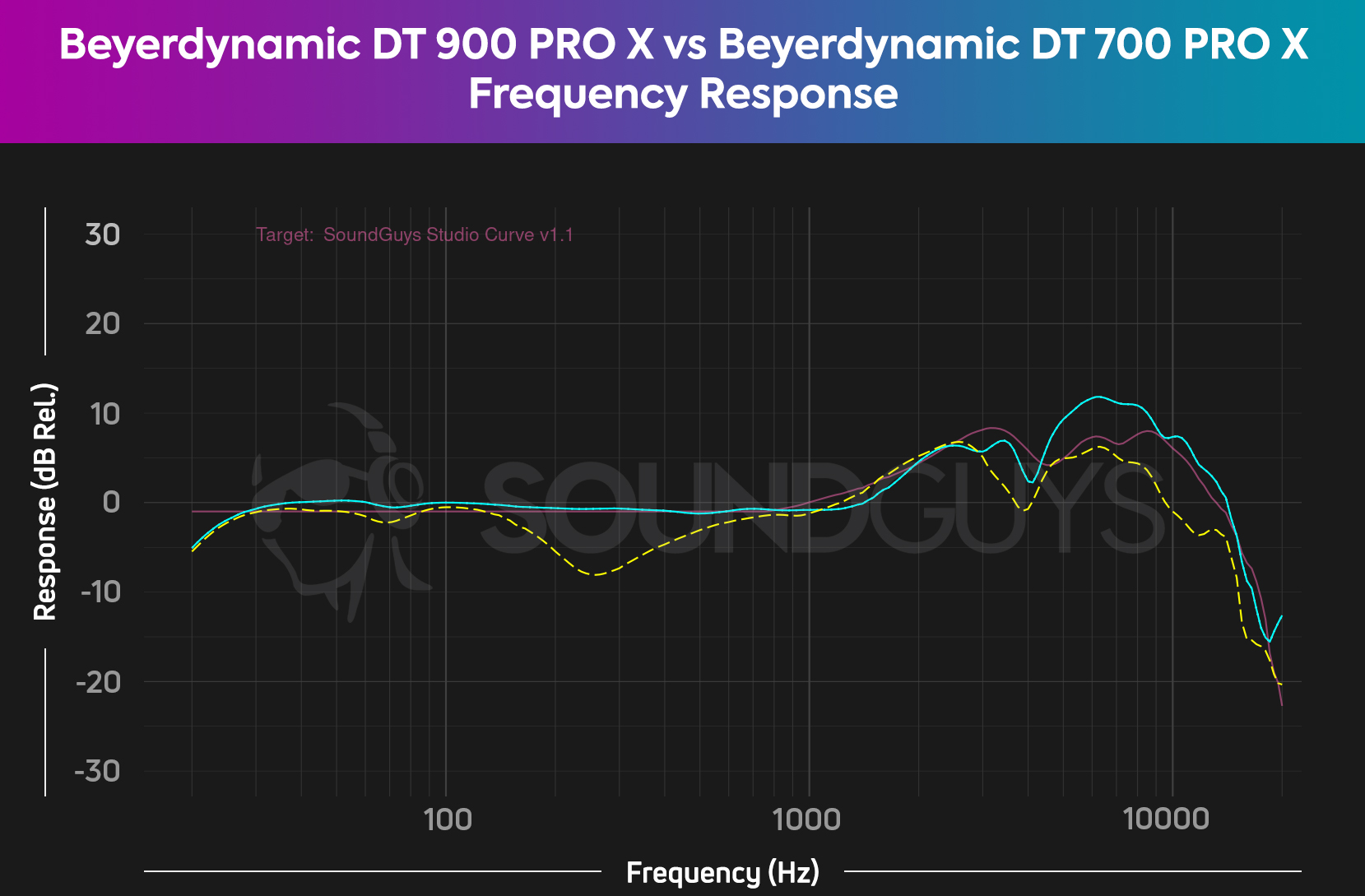
The DT 700 PRO X is essentially the same headset but with a closed-back design instead. If you want the option to listen to your music on the go, this is a better option than the DT 900 PRO X. Both headsets cost the same, but the open-back version has a better midrange response for mixing, though the treble peaks are greater than the DT 700 PRO X. You can see a frequency response chart comparing the two headsets here.
![Beyerdynamic DT 990 Pro[F] The Beyerdynamic DT 990 Pro being worn by Adam Molina.](https://www.soundguys.com/wp-content/uploads/2017/11/Beyerdynamic-DT-990-ProF.jpg)
For a purpose-built set of open-back critical listening headphones, the Beyerdynamic DT 990 PRO is a decent option, but it’s better for mixing. It sells for less than the DT 900 PRO X and still offers a good balance of comfort and utility. One downside is that its 250Ω rating requires a headphone amp or audio interface if you want to equalize the headphones. If you have one already, then that works, but if you don’t, the nice price (compared to the DT 900 PRO X) might not actually work out to be cheaper overall.
The best value headphones for recording

Durability 6.5 Value 6.5 Design 8.0 Comfort 8.5
The Sony MDR-M1 is the successor to the Sony MDR-7506, which producers and artists alike relied on for decades. The new Sony MDR-M1 have updated sound with more low-end, and thicker padding for improved isolation and comfort. While the MDR-M1 aren’t ideal for mixing, thanks to their closed-back design and emphasis on bass, they make for great recording and production headphones.
Loading chart ...
The headphones with the best sound quality

Durability 7.0 Value 8.8 Design 9.5 Comfort 9.7
If you’re in the market for audio nirvana and have the budget to match, look no further than the Sennheiser HD 800 S. These headphones are an audiophile’s dream, meant for those who desire an “endgame” experience without future upgrades. Don’t let their understated appearance fool you. Forgoing gold leaf and leather, they focus on what matters most: exceptional sound quality and unparalleled comfort. The unique, hemisphere-shaped ear cups maximize space around your ears, allowing for an impressively natural sound reproduction. Paired with a lightweight build and velour ear pads, comfort is guaranteed, even during marathon listening sessions.
But the real magic lies in their performance. Offering a soundscape that provides an uncanny illusion of spatial depth, the HD 800 S is a cut above the rest. Thanks to deep ear cups and angled drivers, they excel in recreating the intricacies of various genres—from the crispness of orchestral pieces to the adrenaline of action movies. The bass is a tad subdued, which might not be to everyone’s taste, but this is by design. Besides, the bass and other sound elements are easily adjustable via equalization without any noticeable distortion, even at higher levels.
So, is this headset worth its hefty price tag? Absolutely, but with a caveat: it is for a very specific audience. If you’re looking to invest in a dedicated indoor listening station where cost is secondary to quality, these headphones will feel like a revelation. The Sennheiser HD 800 S delivers a top-tier performance with only minor footnotes, making it a shoo-in as a top pick for studio headphones.
Loading chart ...
Sennheiser is an audio stalwart and remains one of the most reputable audio companies around. Sure, many debate over which of its headphones sounds better, but the HD 820 dominates the hi-fi conversation, and it far exceeds our top-end budget of $1,000. The large, closed-back design is a departure from the beloved HD 800, but the Sennheiser HD 820 retains the unique aesthetic Sennheiser fans have grown familiar with.
Although listeners may be concerned by the transition from open-back to closed-back between the high-end models, Sennheiser claims that this design achieves the same open soundstage that we’ve come to expect. What’s more, the closed build also better insulates listeners from external noise.
For better or worse, these 300Ω audiophile headphones require the use of an external amplifier, which will set you back quite a bit more. We understand that many people are simply in search of reliable studio headphones and aren’t looking to consider a payday loan to cover their next set of cans. Regardless, we felt it appropriate to tip our hats to the Sennheiser HD 820 and feature more financially viable options below.
The most versatile studio headphones
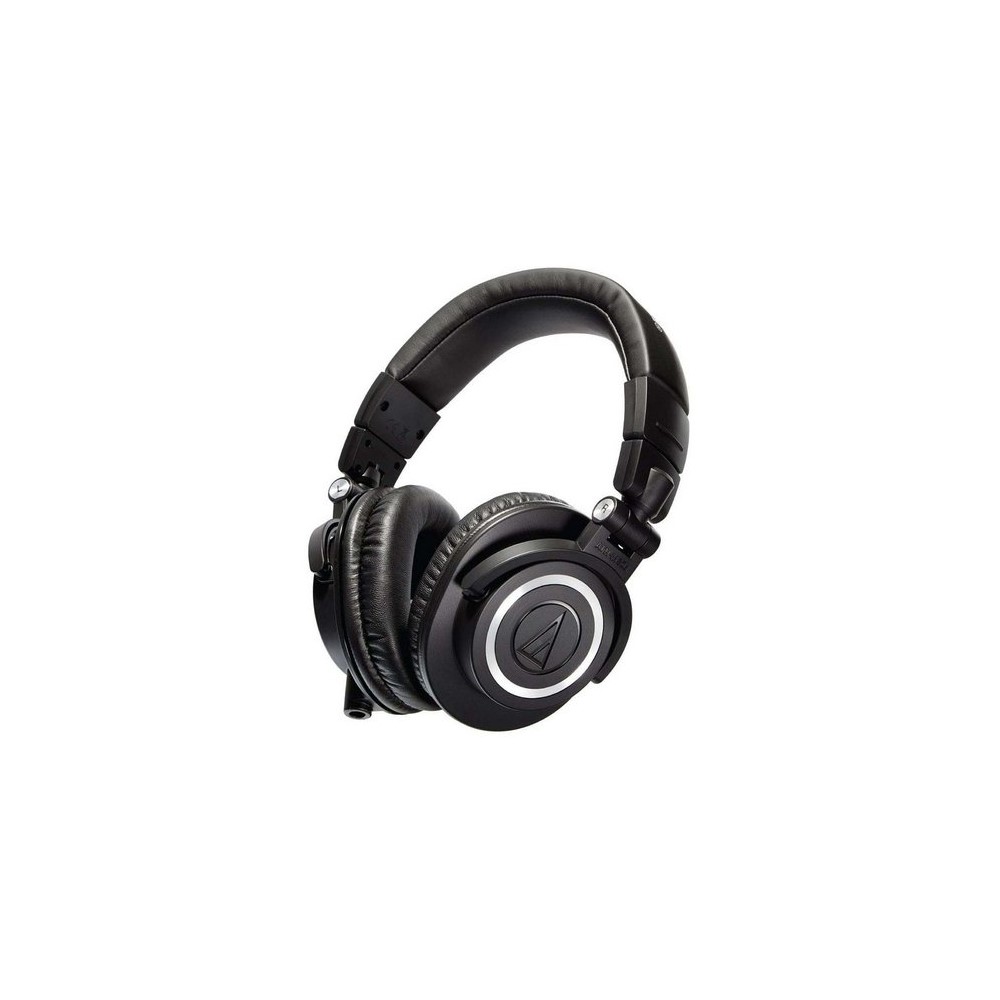
Durability 6.9 Value 8.0 Design 7.5 Comfort 6.9
The ATH-M50x has a reputation for being the go-to pair of budget studio headphones, but it’s not as accurate as many people think. Sure, Audio-Technica tuned these to have a more neutral frequency response than most consumer headsets, but there is some audible bass amplification. This isn’t inherently a bad thing as it makes the ATH-M50x a great pair of versatile headphones for daily listening, but be aware that the ATH-M40x actually has a slightly more accurate sound profile.
Loading chart ...
Because of the bass bump, this might be better for the musician who needs to feel more from the instrumentation while in the recording booth and then still wants to listen to some music on the way home. The ATH-M50x will satisfy both roles well. The ear cups sit flat on your ears and provide a decent amount of isolation, not to mention that they also swivel up to 90 degrees.
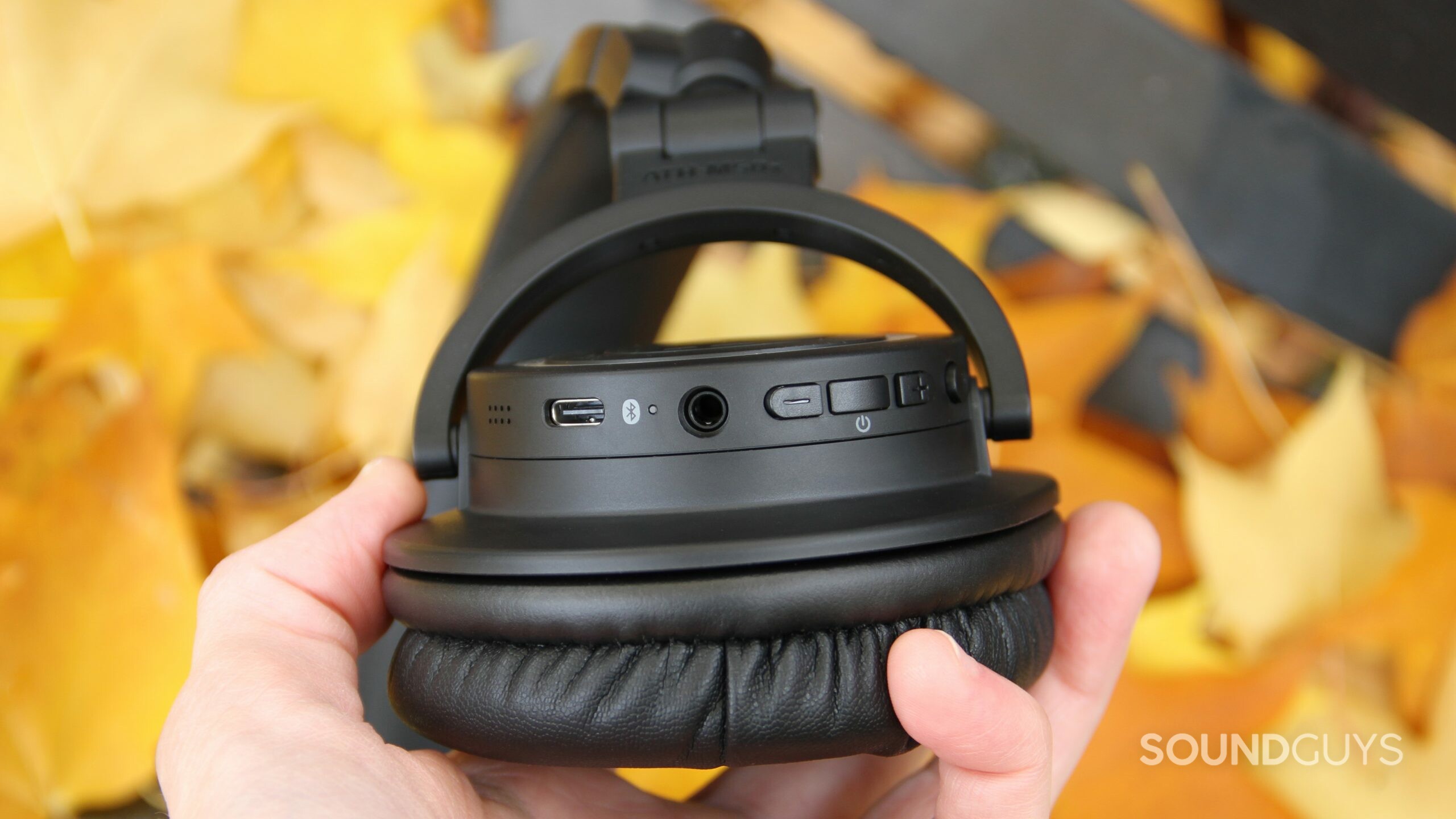
The Audio-Technica ATH-M50xBT2 is everything we love about the ATH-M50x but with wireless connectivity. You get your choice of the SBC, AAC, and LDAC Bluetooth codecs when out and about, or you can just revert to the 3.5mm headphone jack for studio use. The microphone is pretty good, and it’s a great option for those who want one pair of headphones to do everything with.
The best for bedroom music producer

Durability 7.5 Value 8.5 Design 9.0 Comfort 9.5
The Sennheiser HD 490 PRO stands out as an exceptional choice for audio professionals and bedroom music producers alike, offering versatility, durability, and excellent sound quality, especially for those in pursuit of open-back headphones. Designed with music production in mind, these headphones feature swappable ear pads, allowing users to tailor sound and comfort according to their preferences. Despite the challenge of swapping the ear pads due to their non-magnetic attachment mechanism, both the velour and fabric options offer substantial comfort for extended listening sessions. The HD 490 PRO also includes a unique offering, the free dearVR MIX-SE plugin, enhancing the mixing experience by simulating various listening environments within digital audio workstations.
Weighing just 260g, the HD 490 PRO’s design prioritizes comfort for long studio sessions without compromising on sound quality, which remains neutral across different ear pad options, offering a slightly varied listening experience. The headphones support both casual listening and professional mixing needs, thanks to their detailed soundstage and the ability to accurately reproduce sub-bass frequencies, a rare find in open-back designs. However, they fall short in noise isolation, a common trade-off with open-back headphones, making them less ideal for noisy environments or recording acoustic instruments.
Loading chart ...
The best for DJ’s and touring musicians

Durability 6.9 Value 8.0 Design 8.4 Comfort 9.0
The AKG K371 is a great pick for anyone who travels frequently. Despite the over-ear design, this package is slim and portable: the ear cups flip up and into the headband, similar to Audio-Technica’s design. What’s more, the K371 is good for DJs as you can rotate either ear cup backward and up to keep one ear on the crowd.
The frequency response was tailored using Harman’s consumer preference research curve, which helps create content that translates well to other systems. AKG supplies you with three cables, two straight and one coiled, so no matter your environment, you’ll have something that works for you.
Despite the plastic build, the headphones are durable and withstand multiple trips at the bottom of a backpack during our full review. Don’t drop an unabridged encyclopedia onto this headset, but the build can withstand some roughhousing. What’s more, these headphones are great for listeners with glasses because the slow-retention memory foam wraps around the glasses’ arms.
Loading chart ...
The best studio headphones: Notable mentions
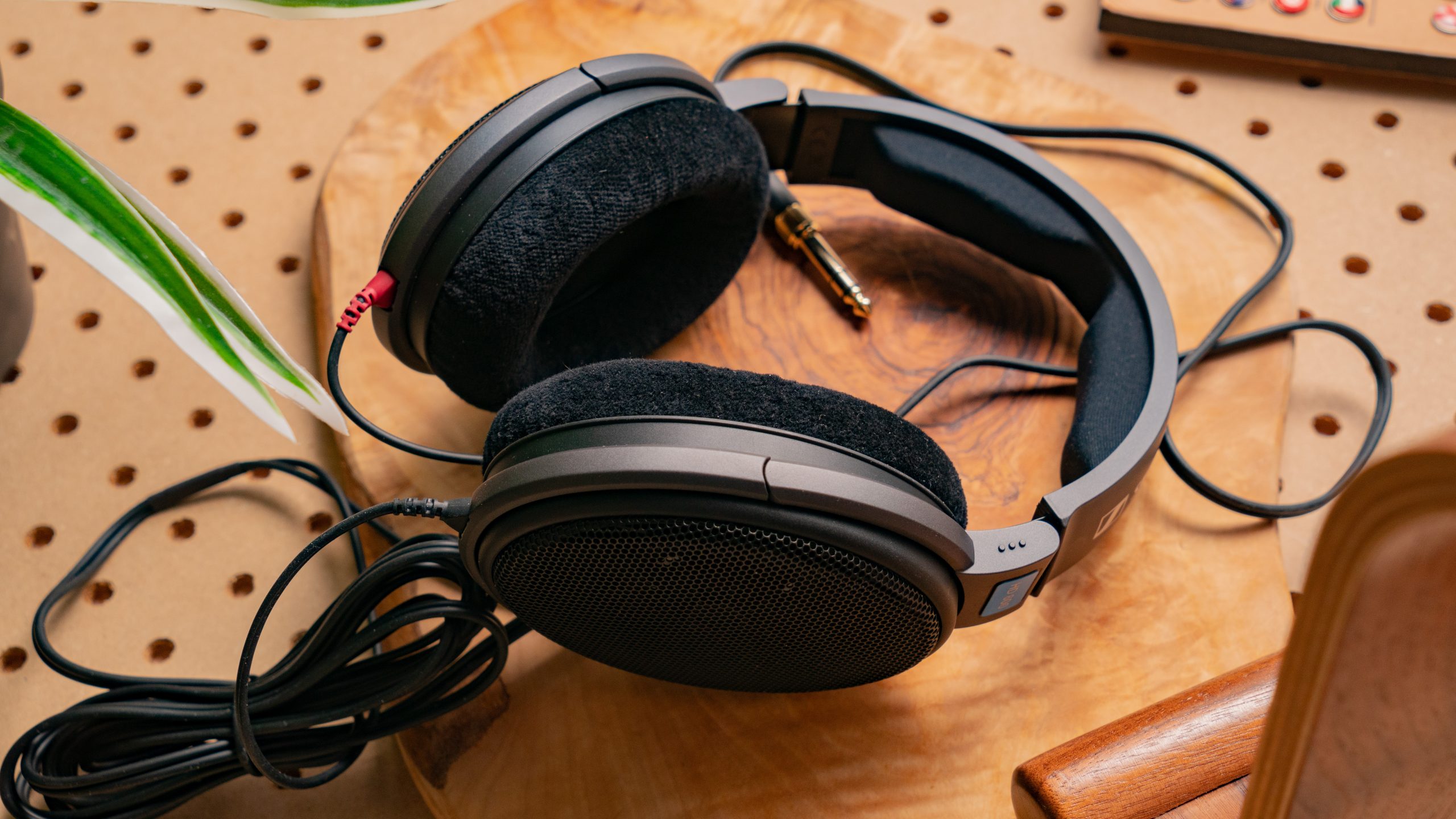
- AKG K240 Studio ($56 at Amazon): This pair of open-back headphones serves as a great alternative to the Sony MDR-7506 and features a more modern, stylish design with larger ear cups.
- AKG K702 ($135 at Amazon): This pair of open-back headphones has its place in a studio, but remember that it won’t have much bass. While it’s very comfortable, the size can be a bit unwieldy, and you can get a better-value headset.
- Audio-Technica ATH-AD900X ($189 at Amazon ): While you don’t want to use this in the recording studio because the open-back design causes the sound to bleed through, it’s great to use during the mixing phase of music-making.
- Audio-Technica ATH-M20x ($49 at Amazon): If you really can’t push your budget, this is one of the best options for studio-style headphones under $50.
- Audio-Technica ATH-M40X ($99 at Amazon): Although the ATH-M50x is often in the limelight, the M40X is no slouch and provides a less emphasized low-end.
- Audeze MM-100 ($399 at Amazon): The Audeze MM-100 provide excellent build quality and planar magnetic drivers that focus on the mid-range.
- Beyerdynamic DT 1990 PRO ($529 at Amazon): If you want absolute luxury and don’t mind paying for it, this set of open-back cans looks, sounds, and feels premium.
- Sony MDR-MV1 ($347 at Amazon): The Sony MDR-MV1 is a capable set of headphones for content creation, but shouldn’t be the first set of cans you grab for casual listening.
- Sennheiser HD 280 Pro ($87 at Amazon): This monitoring pair is widely regarded as some of the best budget-minded studio headphones that take a tank to kill. For under $100, that’s not a bad return.
- Sennheiser x Drop HD 6XX ($199 at Drop): This is the closest you’ll get to a true HD 650 but for half the budget. These are outstanding headphones for the mixing station—not so much for the booth.
- Sennheiser HD 600 ($299 at Amazon): Older-model headphones stick around because they perform their function and perform it well. The Sennheiser HD 600 is one of the most venerated headphones in the audiophile space over the last few decades and for good reason.
- HiFiMan Sundara ($299 at Amazon): These entry-level planar magnetic headphones have not-so-entry-level performance.
Recent Updates
- May 14, 2025: We updated this article to replace the Sony MDR-7506 with the new Sony MDR-M1.
- October 21, 2024: We refreshed this article with fresh formatting, and added the HiFiMan Sundara to the notable mentions. We also moved the Audeze MM-100 to notable mentions.
- April 9, 2024: We added the Sennheiser HD 490 Pro to our top picks and added more notable mentions.
Don’t need studio headphones? Get something else!
If you want good quality headphones and have money to spend but don’t want studio headphones, you should probably get something else. Though studio headphones offer very good sound quality, these headphones are most often more expensive to get and offer far fewer features than consumer headphones. It’s very probable that if you’re not an audiophile or music creator, you don’t want studio headphones.
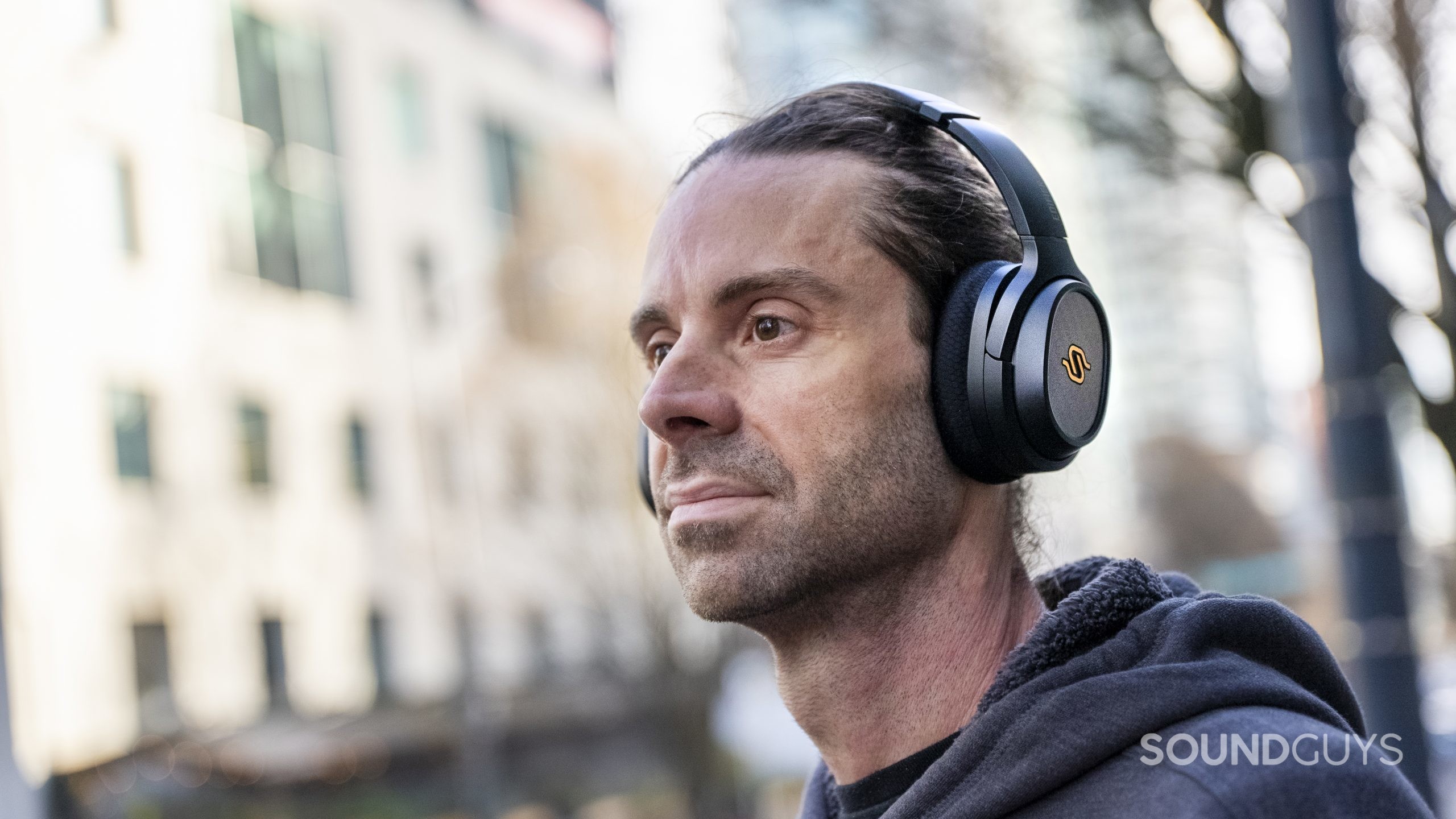
For example, studio headphones are pretty terrible for commuters: a situation where you’d want active noise canceling headphones instead for their superior noise isolation and bassier sound (that can more easily be heard over engine noise). Additionally, studio headphones aren’t generally meant for gaming consoles — making them a poor pick for that purpose.
Studio headphones shine by the computer and in the mixing booth. They’re most often tools designed for a specific purpose, but depending on the situation, they can also be utilized for your own enjoyment.
What you should know about studio headphones
Studio headphones aren’t for everyone, as many of us prefer a bit of bass amplification for daily listening. What many people consider to be good sound isn’t what everyone else considers to be good sound. But when you’re getting paid to do a job, accuracy takes priority over a consumer-friendly experience. While we could go on about all of the reasons why you should want some studio headphones, we’ll keep it simple with a few quick points.
How should studio headphones sound?
Loading chart ...
Any set of headphones has a designated frequency response, which indicates how a particular set of headphones reproduces all of the tones within our range of hearing (typically 20Hz-20kHz). If you’re recording or creating music, you will want a pair of headphones with a relatively neutral frequency response to allow for accurate, consistent mixing. This means that the drivers don’t emphasize or de-emphasize any particular area of the spectrum more or less than the others. Nothing is perfect, but the closer you can get to that ideal studio response, the more accurate your mix will sound.
Your ears aren’t perfect. Our actual range of hearing depends greatly on our age and how well we’ve been taking care of our ears throughout our lives. You can even up to your ears to the test here.
Do studio headphones need an amp or DAC?
While consumer headsets don’t typically require an external amp, studio headphones often will need them. Fortunately, plenty of easy-to-use USB interfaces are available to streamline your production process.
Should you get open or closed-back headphones?
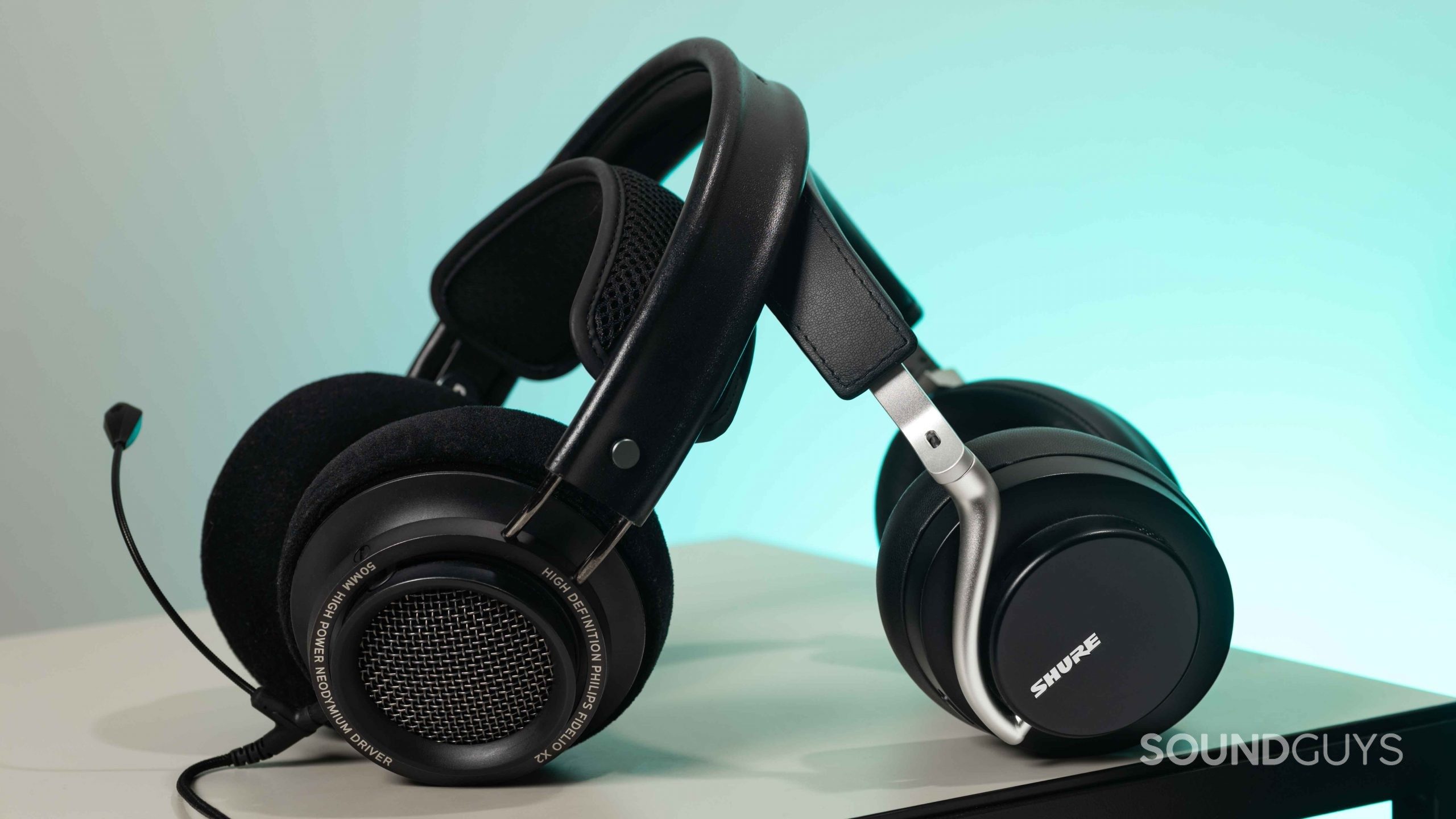
Open-back and closed-back headphones refer to whether the back of the headphone driver is open to the environment or enclosed. While closed-back headphones are better for isolating the listener from their surroundings, open-back cans are typically better for studio applications: they create a better representation of three-dimensional sound. Studio headphones are typically closed-back, so the musicians can use them while recording without risk of sound feeding back into the microphones. Still, open-back headphones can be used for monitoring and mixing purposes.
Consider reading Lil’s educational piece on why you might not want studio headphones and perhaps consider some of the best over-ear headphones instead.
Why you should trust SoundGuys
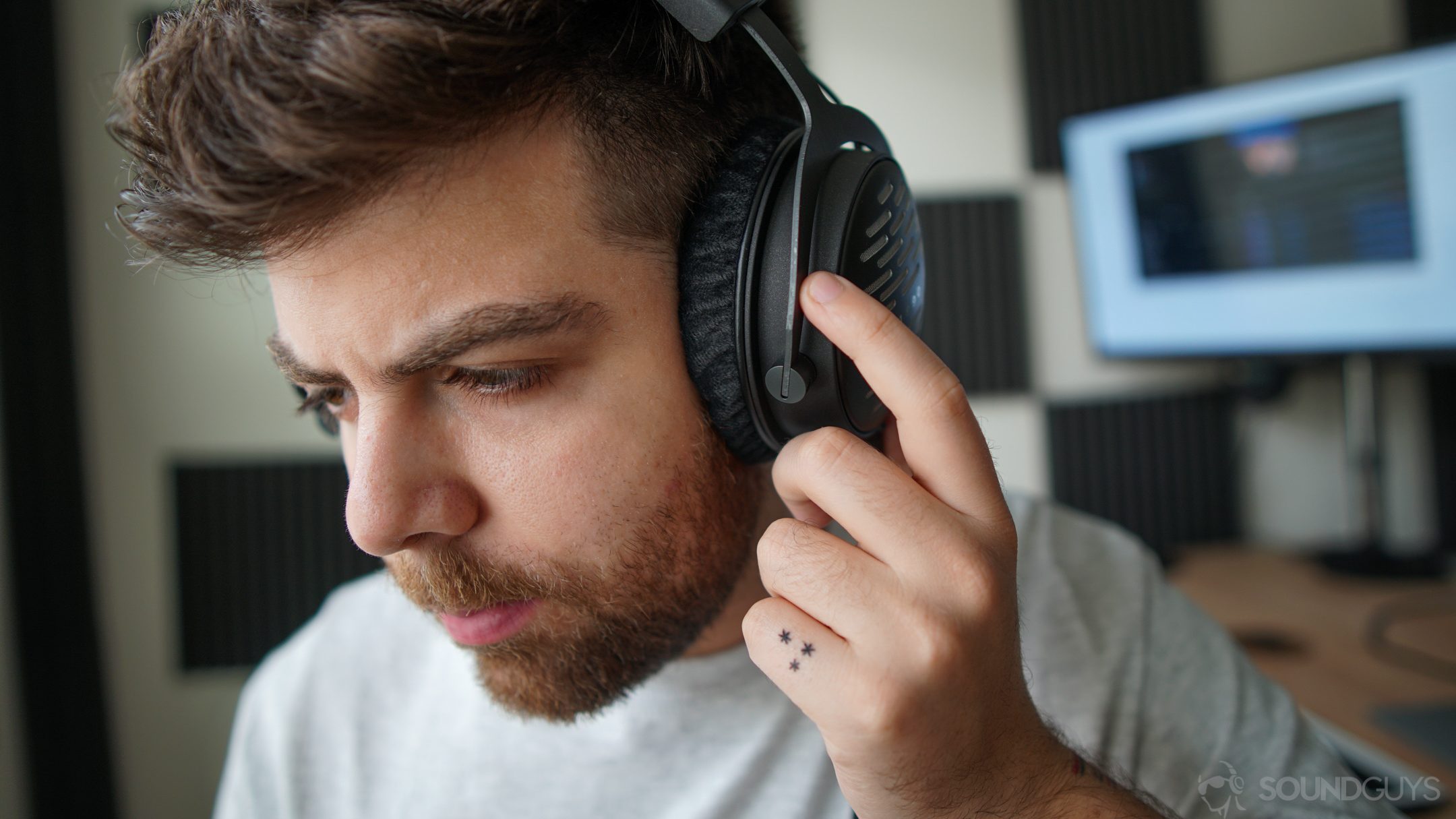
Working at SoundGuys allows each of us to have plenty of hands-on time with the latest and greatest audio products. While we do spend ample time testing out great products, we also receive some ones that need work. Regardless of how one pair of headphones stack up against another, it gives us a different reference point for understanding what’s good and what’s not when it comes to consumer products.
Ultimately, we want to make the research process easier for you so you can spend more time enjoying your headphones. None of our writers may benefit from championing one set of cans over another.
Frequently asked questions
The Sennheiser HD 25 is ideally suited to DJs with its swivel ear cups and on-ear fit. That on-ear fit is more isolating than other on-ear typically but not as effective as the seal you get from closed-back over-ear designs. Again, it’s comfortable for on-ear but not ideally suited for studios. Still, it does have a long cable, which is handy for tracking musicians.
The Sony WH-1000XM4 don’t have a particularly neutral frequency response, and they do let you equalize the sound signature in their app. You will want to use them in active mode (electronics switched on) since the passive response is not good at all.
Ideally, you will have both studio headphones and studio monitors. Studio headphones are necessary for recording and tracking, but studio monitors are much better for mixing. They create a more accurate soundstage than headphones can, making it easier and faster to create good mixes.
More vendors than just Amazon have quick and cheap shipping now, and plenty of small businesses sell your favorite products too. Where you choose to buy your headphones could depend on a lot of things, including your shopping ethics, how much customer support you want, and the warranty of the company. Check out our guide to get a rundown of some options and their stats.
For studio recording, musicians typically use closed-back headphones to prevent sound from feeding back into the microphones. However, for other studio applications like monitoring and mixing, open-back headphones are preferred due to their ability to create a better representation of three-dimensional sound.
Producers lean towards trusted classics and modern marvels alike. The Sony MDR-7506 has been a staple since the mid-1980s, while newer entrants like the Beyerdynamic DT 900 PRO X and the Sennheiser HD 600 have also found their place in professional studios.
In the studio realm, closed-back headphones are standard for recording sessions, ensuring sound doesn’t escape and interfere with recordings. Yet, when the scene shifts to mixing and monitoring, the open-back variants are often the top pick, offering a detailed and open sound profile.
Studio-grade headphones come with a range of price tags. For those on a budget, options like the Sony MDR-7506 start at around $99.99. On the higher end, headphones like the Sennheiser HD 820 can reach up to $2,399.95. But there’s a diverse range in between, catering to various needs and budgets.
Absolutely. Studio headphones are built for precision and flat frequency response, enabling accurate audio reproduction. They are designed for professionals who require nuance and detail in sound. In contrast, regular headphones often have a “colored” sound that boosts certain frequencies like bass, making them less accurate.
Generally speaking, studio headphones are not the go-to choice for DJs. DJs usually prefer headphones with enhanced bass and louder volume to cut through ambient noise, features typically absent in studio headphones. However, studio headphones can be useful in a studio setting for creating and mixing tracks.
Studio musicians usually hear a customized mix that helps them keep time and pitch. This mix often includes a metronome click, other instruments, and sometimes even a guide vocal. The goal is to provide them with all the necessary audio cues for a pitch-perfect performance.